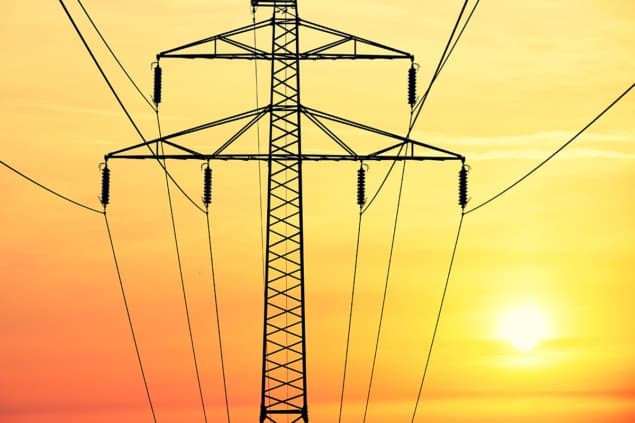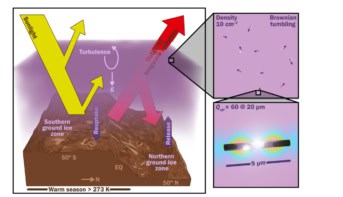
Underlying the policy debate on energy is a fault line – a chasm between two basically different approaches. Not the usual one between big centralized and small decentralized energy, although that is part of it. This goes deeper. It concerns the basic, often unspoken, assumption that electricity is the key energy vector. We have the idea that electrification is modernization. It’s not just Lenin who said that, it’s everyone ever since, everywhere. It made sense. Electricity was clean, fast, controllable, and it has become increasingly valuable.
However, that means it’s become increasingly expensive, in part since the main ways of producing it involved the use of increasingly scarce fossil fuels. Interestingly that, and the ever-growing environmental impacts of burning those fuels, led to drives to use it more efficiently.
We have a polarity of views – essentially between backers of “pipes” and “wires”
That has worked in some places. Demand in some industrial countries has fallen, and not just because energy-intensive manufacturing activities have been exported to developing countries. For example, US residential electricity use fell in recent years and is now flat. Electricity use overall, i.e. in all sectors, also fell in the UK, back to 1994 levels, partly due to energy-saving measures, despite continued economic growth. It’s also fallen elsewhere – in 18 of the 30 IEA (International Energy Agency) member countries.
That is good news, surely, although it may worry the companies who generate and sell electricity. Help may be on hand for them though, since demand for electric vehicles is growing. And some governments are looking to electricity as the way to provide heating.
Gas on?
However, there is another viewpoint from which these possible new electric-power-demand-boosting developments do not look such good news. It’s based on a rival assessment of what makes sense in terms of meeting energy needs — the use of gas as an energy vector. This option is claimed to be more efficient and less costly than electricity for heating, and possibly for other purposes.
It is certainly easier to transmit gas with lower energy losses. And it can be stored, unlike electricity. In the UK gas is the main source of heat. With heating demand being high at times, the UK gas grid carries about four times more energy than the electric power grid. That is why some say it is foolish to try to switch over to electric heating — the power grid could not cope without massive expansion.

100% renewable electricity is viable
We have a polarity of views – essentially between backers of “pipes” and “wires”. Moving the context to the climate debate, the electric wire lobby says the energy system can best be decarbonized by sending power from wind, solar and other renewables to energy users down wires, including for heating and for charging electric vehicles (EVs). The pipe lobby says that, for heating, it makes more sense to stay with the gas grid and standard appliances but switch over to green gas. That way, you don’t have to make many changes whereas to use electricity efficiently you would have to install expensive heat pumps in every house. Green gas can also be used for vehicles, as compressed natural gas already is. So we have something of a stand-off of views.
Heat and power
The situation is complicated by the addition of another pipe option — the supply of heat direct to users. In high-density urban environments, district heating can make more sense than individual domestic boilers, and heat networks could supply perhaps half of UK heat. What’s more, local gas-fired Combined Heat and Power (CHP) plants can supply heat much more efficiently than small domestic heat pumps. Heat pumps can have a coefficient of performance (COP) of 3 or 4, i.e. they can get three or four times more useful heat out of the input electricity than using it directly. However, CHP plants have a COP equivalent of maybe 9 or more; they use heat from burning fuel that would otherwise be wasted.
The gas/heat pipe versus electric wire debate continues. The electricity lobby is still dominant, although other views are gaining traction, and concessions have been made. The UK government’s advisory Committee on Climate Change suggested a compromise, with electric heat pumps used for bulk heating but gas-fired boilers retained to meet peak demand. In time, the committee says, the natural gas can be replaced by green gas.
A similar approach has been backed EU-wide, with the European Commission still pushing for electrification as the main route ahead but recognizing the potential of green gas and heat. That formulation might be challenged but the gas/pipe lobby is hampered by the fact that the biogas resource is limited — there are land-use constraints on expanding biomass production — and most of the other green gas options are in their infancy, although Ecofys has suggested that this could change soon. The growing interest in so-called “power to gas” (P2G) hydrogen options certainly suggests that a new and large source of green gas could emerge.
All power to gas
P2G involves the use of electricity from renewables to produce hydrogen from the electrolysis of water. In some cases, the hydrogen is then converted to methane gas using captured carbon dioxide. That methane can be injected into the gas mains, as can hydrogen, or used as a vehicle fuel. Since there are likely to be increasing amounts of wind and solar capacity, there will at times be excess output over demand. Converting that surplus to hydrogen and/or methane makes more sense than curtailing the output of wind and solar plants.
What’s more, these gases can be stored and then used to generate power when there is a shortage of renewable power. So P2G provides not just valuable fuels but also a partial solution to the problem of the variability of renewable sources like wind and sunshine — assuming there is enough surplus to go around. Conversion efficiencies for P2G do need attention but they are rising and costs are falling as new electrolysis technology develops.

All power to gas
At present most P2G projects, for example in Germany and the UK, are dedicated to producing vehicle fuels or, to a lesser extent, gas for grid injection. But the grid-balancing role could grow and, neatly, will be made both possible and necessary by the growth of wind and solar generation. It could be a way ahead.
The P2G grid-balancing approach essentially offers a way to store power until it is needed, with hydrogen or methane storage being much easier than direct electricity storage, for example in batteries. Large volumes can be stored over long times. However, there is another approach; heat can also be stored in bulk over long periods with low losses. Devotees of CHP argue that, if linked to heat stores, it too can offer a grid-balancing option, given that the ratio of power to heat output can easily be changed. When there is plenty of green power, the power output from a CHP plant can be lowered and the heat output stored, if it too is not needed. When power demand rises, the CHP plant power output can be raised, and if heat is needed, it can be supplied from the store.
Most CHP plants use fossil gas but are highly efficient (70–80% or more) so relatively low-carbon. Increasingly they use biomass or biogas, in which case they are near-zero net carbon.
Pipe dreams
As can be seen, the gas/heat pipe lobby has some powerful arguments on its side. Some argue for total conversion to green gas as, for example, in the proposed Leeds H21 project. That would produce hydrogen by steam reformation of natural gas, with the resulting carbon dioxide stored to make the process lower carbon. The P2G approach, however, looks to a zero-carbon system that uses electricity-producing renewables to produce storable 100% green gas for heating or other purposes, including grid-balancing. CHP also offers balancing and, if using a green fuel, near-zero carbon power. There are also other approaches to green heating. Electricity from wind or photovoltaics (PV) can be converted to heat and stored. Large heat pumps, powered by wind or PV electricity, can upgrade the heat from stores. In some locations all these systems could be combined, with solar heat also feeding into the heat stores.
Integrated systems that cross the boundaries between heat and power may prove to be the way forward. But if we are to seek optimal mixes of heat and power, wires and pipes, we must move away from assuming that electricity is always the best option. It is invaluable in some contexts, particularly for local “peer to peer” trading by prosumers, and also for long-distance high-voltage direct current (HVDC) supergrid balancing, but many end-uses now do not need a 240 V 50 Hz grid supply, and some are better served by other energy vectors. And, aiding balancing, “hydrogen could eventually become a way to transport renewable energy over long distances”, according to the International Renewable Energy Agency (IRENA). So the future may not be “all electric” after all.



